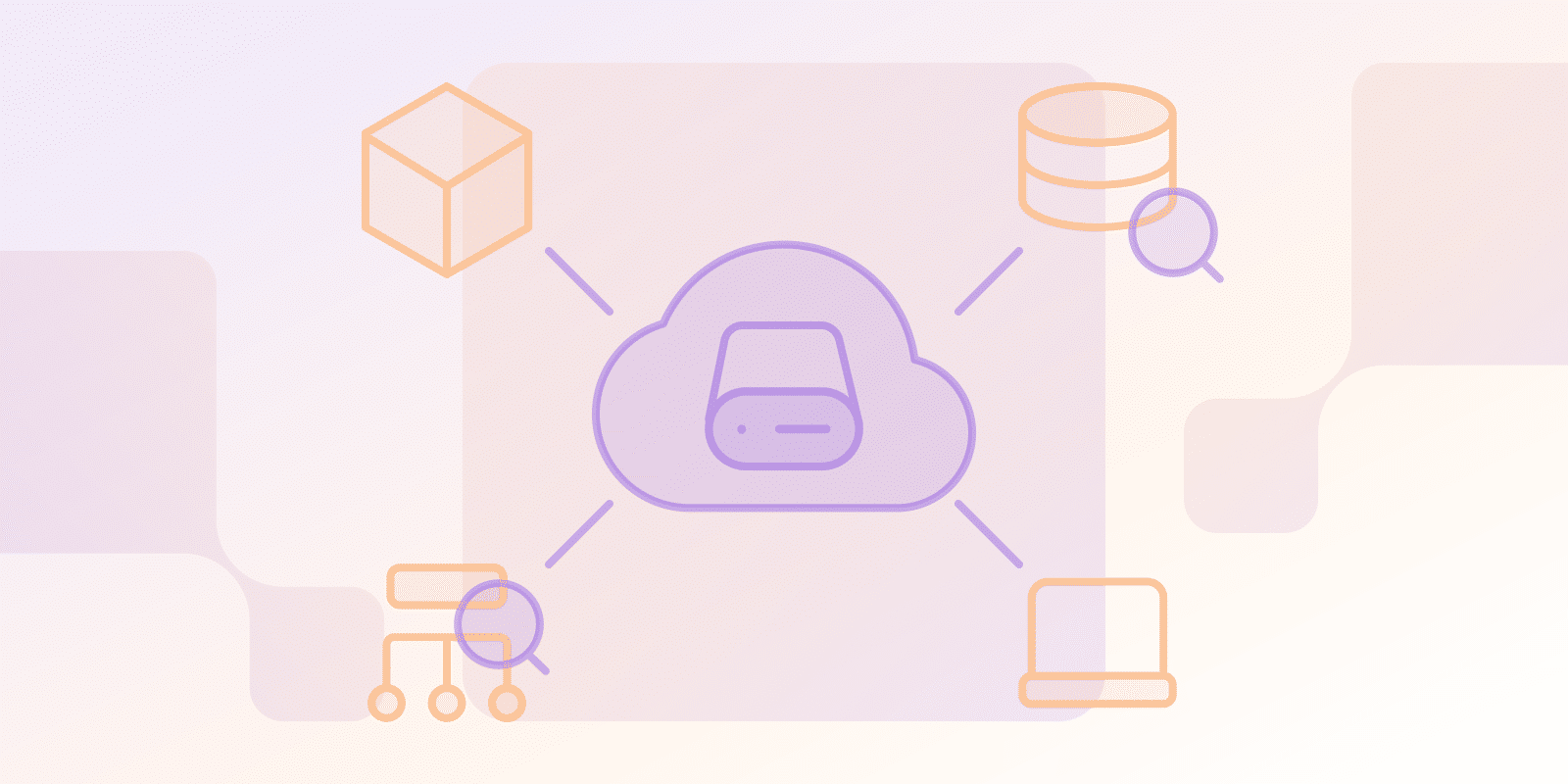Optymalizacja kosztów chmury
Czym jest monitorowanie w chmurze?

Czym jest monitorowanie w chmurze?
Monitorowanie w chmurze to proces ciągłego śledzenia i analizowania wydajności oraz wykorzystania zasobów aplikacji i infrastruktury opartych na chmurze.
Obejmuje to monitorowanie kluczowych wskaźników, takich jak wykorzystanie procesora, użycie pamięci i ruch sieciowy, w celu zapewnienia optymalnej wydajności i identyfikacji potencjalnych problemów, zanim się nasilą.
Jakie są kluczowe różnice między monitorowaniem chmury a obserwowalnością i w jaki sposób przyczyniają się one do wydajnego zarządzania użytkowaniem chmury?
Monitorowanie chmury odnosi się do procesu monitorowania zasobów chmury i ich wydajności, a także monitorowania kluczowych wskaźników chmury, takich jak wykorzystanie procesora, użycie pamięci i użycie sieci. Proces ten pomaga w wykrywaniu potencjalnych problemów i weryfikacji prawidłowego działania aplikacji.
Obserwowalność zapewnia głębszy wgląd w sposób działania aplikacji i ich zależności. Analiza interakcji komponentów odgrywa kluczową rolę w identyfikowaniu i rozwiązywaniu potencjalnych problemów, zanim się nasilą, zapewniając stabilność i wydajność systemu.
Monitorowanie chmury i obserwowalność umożliwiają zbieranie i analizowanie danych o środowisku chmury:
- Zidentyfikuj nieefektywności: Zidentyfikuj procesy wymagające dużych nakładów lub zasoby, które nie są optymalnie wykorzystywane.
- Optymalizacja wydajności: Dostosuj swoje aplikacje, aby poprawić szybkość i responsywność.
- Zapobiegaj awariom: Zidentyfikuj obszary wymagające interwencji, zanim staną się dużymi problemami.
- Podejmuj świadome decyzje: Zbieraj i przekształcaj dane w praktyczne informacje, które pomogą Ci zoptymalizować koszty.
Jak wykorzystać narzędzia do monitorowania chmury, aby uzyskać informacje w czasie rzeczywistym?
Narzędzia do monitorowania chmury oferują źródło danych w czasie rzeczywistym na temat wykorzystania usług w chmurze. Wykorzystując pulpity nawigacyjne i raporty, dane można analizować, aby ujawnić trendy, wartości odstające i możliwości poprawy.
Oto jak skutecznie korzystać z narzędzi do monitorowania chmury:
- Skonfiguruj niestandardowe alerty: W przypadkach, gdy wykorzystanie zasobów przekracza ustalone progi, alerty umożliwią szybkie dostosowania.
- Śledź trendy kosztów: śledź swoje wydatki, aby móc zauważyć obszary zmian.
- Analizuj wskaźniki wydajności: Znajdź ograniczenia wydajności w swoim kodzie i wykorzystaniu zasobów i wprowadź niezbędne zmiany w swojej aplikacji.
- Prognozuj przyszłe wykorzystanie: Oszacuj zapotrzebowanie na zasoby, aby nie przydzielono Ci więcej lub mniej zasobów niż jest to wymagane.
| Funkcja | Monitorowanie ręczne | Automatyczne monitorowanie chmury |
|---|---|---|
| Monitorowanie wydajności | ||
| Wgląd w czasie rzeczywistym | Ograniczone i czasochłonne | Natychmiastowe i kompleksowe |
| Monitorowanie metryk | Sporadyczne i niespójne | Ciągłe i precyzyjne |
| Zarządzanie kosztami | ||
| Monitorowanie kosztów | Analiza retrospektywna | Proaktywna optymalizacja kosztów |
| przydzielanie zasobów | Statyczne i nieefektywne | Dynamiczne i adaptacyjne |
| Zapobieganie błędom | ||
| Wykrywanie błędów | Reaktywne rozwiązywanie problemów | Predykcyjne identyfikowanie problemów |
| Mechanizm alertów | Ręczne ustawianie progu | Automatyczne, inteligentne alerty |
Jaką rolę odgrywa automatyzacja w monitorowaniu wykorzystania chmury i jak można ją wdrożyć, aby usprawnić działania optymalizacji kosztów?
Jednym z najważniejszych aspektów kosztów przetwarzania w chmurze jest automatyzacja. Dzięki automatyzacji działań, takich jak przydzielanie zasobów, skalowanie i de-prowizjonowanie, można:
- Zmniejszyć ryzyko błędu ludzkiego: Automatyzacja procesów zmniejsza prawdopodobieństwo wystąpienia kosztownych błędów, które mogą być spowodowane ręcznym wprowadzaniem danych.
- Poprawić wydajność: Przydzielić wystarczająco dużo czasu, aby zespół mógł poświęcić go na kwestie strategiczne.
- Adaptacyjny przydział zasobów: Wdróż mechanizmy automatycznego skalowania zasobów w zależności od wahań popytu, dążąc do optymalnej wydajności i równowagi kosztów.
Oto niektóre środki, które można podjąć w celu wdrożenia automatyzacji:
- Infrastruktura jako kod (IaC): Twoja infrastruktura powinna być zdefiniowana w kodzie, aby można ją było łatwo zautomatyzować i odtworzyć.
- Skalowanie automatyczne: Dla elastyczności używaj zasobów, które można skalować w górę i w dół, a które będą rozliczane tylko za zużytą ilość.
- Skalowanie zaplanowane: Użyj dostępności i stawek użytkowania zasobu, aby zaplanować czas i częstotliwość dostosowań w znanych godzinach szczytu, przerwach i weekendach.
Jak można ustalić efektywne progi i alerty dotyczące korzystania z chmury, aby zapobiec nadmiernym wydatkom i zapewnić optymalną alokację zasobów?
Ustalenie jasnych progów i alertów jest niezbędne, aby uniknąć nieoczekiwanych wydatków i zapewnić wydajne wykorzystanie zasobów. Oto kilka wskazówek, jak zrobić to skutecznie:
- Analizuj dane historyczne: Jest to ważne, aby oczekiwania były realistyczne, a można to zrobić, ustalając granice zgodnie z regularną sekwencją działań.
- Ustaw alerty dla różnych zasobów: Ustaw precyzyjne definicje wskaźników wykorzystania w odniesieniu do procesora, pamięci RAM, miejsca na dysku i przepustowości połączenia sieciowego.
- Użyj podejścia warstwowego: Ważne jest ustawienie różnych poziomów ważności, aby móc poświęcić im uwagę, na jaką zasługują, w zależności od ich poziomu ważności.
- Monitoruj regularnie: Ważne jest, aby od czasu do czasu przeglądać progi i alerty, aby określić ich skuteczność i trafność w odniesieniu do bieżących sytuacji.
Regularne przeglądanie danych dotyczących korzystania z chmury i weryfikacja odpowiedniości konfiguracji alarmów może potencjalnie przyczynić się do szybszego czasu reakcji w rozwiązywaniu potencjalnych problemów, co może pomóc zapobiec znacznym wzrostom kosztów.
Jakie są najskuteczniejsze strategie proaktywnego identyfikowania i rozwiązywania anomalii kosztów w chmurze, zanim wpłyną na Twój budżet?
Strategie optymalizacji kosztów w przetwarzanie w chmurze są jedynym sposobem, aby uniknąć takiego szoku w przyszłości. Oto kilka strategii, które możesz rozważyć:
- Regularnie przeglądaj raporty rozliczeniowe: Wyszukaj wszelkie anomalie w wzorcu użytkowania lub nietypowej kwocie rachunku.
- Użyj narzędzi do wykrywania anomalii kosztów: Wykorzystaj aplikacje AI do analizy zebranych danych i wysyłaj sygnał, gdy zostanie zauważone coś nieprawidłowego.
- Niezwłocznie badaj anomalie: Należy sporządzić kopię każdego odchylenia, ponieważ zawsze należy znać jego przyczynę i, jeśli to możliwe, ją rozwiązać.
- Zoptymalizuj wykorzystanie zasobów: Kontroluj wykorzystanie zasobów z powrotem lub do optymalnego poziomu i porzuć te, które nie są dobrze wykorzystane.
- Przeglądaj swoje model cenowy: Jeśli bardziej odpowiada Ci usługa o różnych formach cenowych, przejdź do planu cenowego.
Wniosek
Optymalizacja kosztów chmury jest kluczowa dla każdej organizacji korzystającej z chmury. Musisz wiedzieć, ile wydajesz, jak dobrze przestrzegasz standardowych procedur i jakie narzędzia pomogą Ci znacznie obniżyć wydatki.